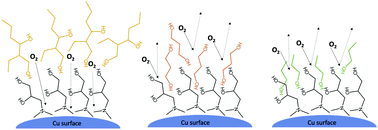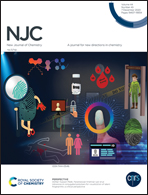Self-reducible copper complex inks with aminediol and OH-based solvent for the fabrication of a highly conductive copper film by calcination at low temperature under an air atmosphere
Abstract
A simple fabrication of copper conductive film was accomplished in one step at low temperature under an air atmosphere. The strategy for solving the problem was the use of both aminediol and OH-based solvent for self-reducible copper complex inks. The complex ink consisted of copper formate, aminediol, and various OH-based solvents calcinated at various temperatures, which resulted in a conductive copper film via rapid calcination at low temperature. The ratio of copper formate, aminediol, and OH-based solvent in complex inks was optimized for a higher conductive copper film. The copper film from the complex ink with a ratio of 1 (copper formate) : 2.2 (aminediol) : 1.8 (diol solvent) was rapidly calcined at 180 °C under an air atmosphere and showed approximately 15 μΩ cm, which is approximately 10 times that of bulk copper. The combination of aminediol and OH-based solvent inhibited the oxidation of the copper surface via adsorption. The developed process is applicable to conductive circuits, resistors, and capacitors in the form of oxide films for use as printable electronics fabricated under an air atmosphere.



 Please wait while we load your content...
Please wait while we load your content...